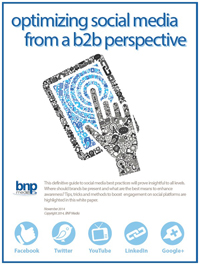Since the 1970s, when the last of the baby boomers entered the workforce, American business has had a fascination with the effects this group of 76 million people (born 1946-1964) would have on the economy as a result of its disproportion to the rest of the population. As the baby boomer generation has aged, there has been a dramatic increase in the proportion of the workforce over the age of 45, which subsequently results in a decrease in the size of the workforce made up by younger workers.
This situation creates a two-pronged problem for companies in the food-processing industries — how to attract and retain younger workers, and how to impart the knowledge, experience and wisdom of the baby boomer generation to this new group. According to a 2001 AARP survey, the majority of American businesses are ill-prepared for the retirement of this massive generation. By following five key steps, the food-processing industry can get out in front of the problem, build a talented employee base and set itself up for generations of future success.
Determine staffing needs
In light of an organization’s planned growth and personnel needs, food processors should examine their workforce at least five years out to determine the number of employees that are likely to enter into retirement. This group has vital skills and deep industry knowledge that companies must find a way to impart to a younger generation of employees. Food processors must realize the years it took for the older workers to gain the skills and knowledge: Thus, it cannot be transferred in a matter of days or weeks. It is not just facts to be shared; it is often very specific nuances of customer relationships that, if lost, could result in diminished business.Companies should examine the entire workforce to identify critical skills and capabilities that must be captured to meet anticipated needs. Once this data is captured, companies can facilitate mentoring and development activities to prevent the formation of skill gaps. Attention must be paid to culture, language and age differences and needs when creating an effective mentoring plan. In addition, food processors should identify those employees who will grow to be the next generation of organizational leaders, and concentrate development on them.
Capture expertise and nurture relationships
Succession planning is the process of determining key young staff and placing them into mentoring relationships with experienced employees who have complementary strengths and weaknesses to develop their skills to fill the void should the existing leader retire. This is a practice routinely done by the nation’s most successful businesses and one that is a must for future success.Additionally, retirements of senior employees could put customer relationships and other affiliations at risk. As employees near retirement age, companies should pair emerging talent with seasoned leaders to ensure that new relationships have time to strengthen and grow, guaranteeing a seamless transition.
Recruit, cultivate and engage young talent
Whether a company’s business strategy is to be the leader in innovation, the low-cost provider, or anything on the spectrum in between, the proper talent is required to execute the strategy; however, in today’s business environment, building and sustaining the necessary team is not an easy task.To effectively recruit the “Millennial” worker, food processors must understand how the needs and wants of this new generation are different from those of its predecessors. Companies must re-evaluate their recruitment and development techniques in order to attract young workers and keep them engaged. Food processors must learn how to use the Web, as well as social networking media, to communicate their staffing needs to potential tech-savvy Millennial hires. Additionally, Millennials are accustomed to easy access to online research, so companies need to make sure that pertinent corporate information is available on the Web site.
Be flexible with work schedules
As long as baby boomer employees are a viable member of the workforce, it is beneficial for processors to keep them on board for their knowledge and skills. Phased retirement, job-sharing arrangements, or expanded telecommuting opportunities are methods that companies can use to retain these employees past 65.Millennials are also looking for companies to provide them with more flexible work schedules. This group is more likely to put their personal and family needs above work, and they use technological tools such as mobile e-mail to conduct business around the clock, so they desire flexibility in their work schedules. Millennials’ use of technology makes them one of the highest performing generations in business history. It is imperative that food processors recognize the benefits of offering flexible schedules to recruit top young talent into their workforces.
A primary source of frustration for any Millennial is the job training process. This generation is quickly able to adapt to new situations and lacks the same patience levels of previous generations of workers. Companies can provide online training for staff, which enables employees to set their own training schedule and to learn at their own pace. Furthermore, flexible training schedules make any company more attractive to the Millennial worker and reduce costs associated with hiring trainers and maintaining physical training facilities.
Summary
The progression of the baby boomer generation toward retirement does pose a serious and immediate concern to the productivity and continued success of companies in the food-processing industries. Droves of seasoned employees with strong business relationships and deep industry expertise could be riding off into golf- and bingo-filled sunsets, leaving former employers behind floundering to maintain productivity and competitiveness. Food processors need to efficiently utilize their workforce, manage the skills gap and capture business knowledge for future generations of employees. In today’s unstable economic market, offering older workers a flexible schedule might be just the thing to entice them to stay, creating a win-win situation for both the organization and employee. Advancements in technology and an openness of processors to new strategies and tools may hold the key to helping food processors make the necessary preparations for the retirement of baby boomers.Rory Granros is the director for industry and product marketing for process industries for Infor, a leading global provider of enterprise software. Sandra Rousseau is Infor’s manager of product marketing for Human Capital Management solutions. For more information, please contact inforinfo@infor.com.






